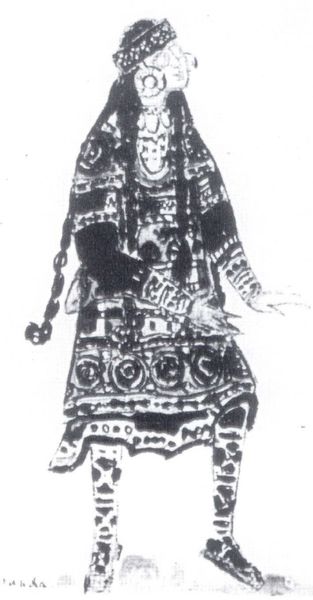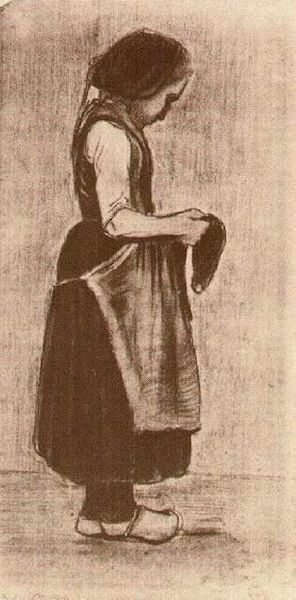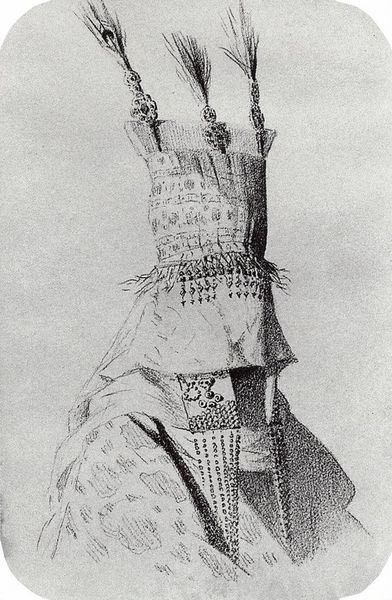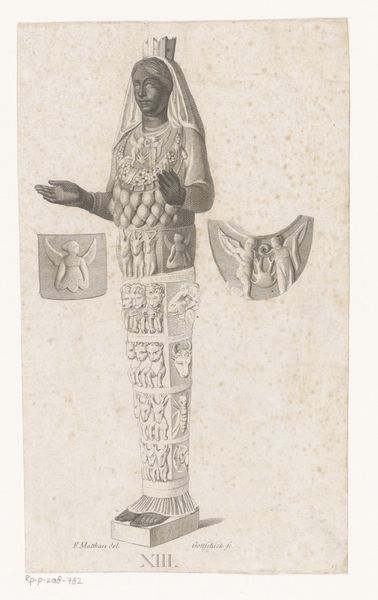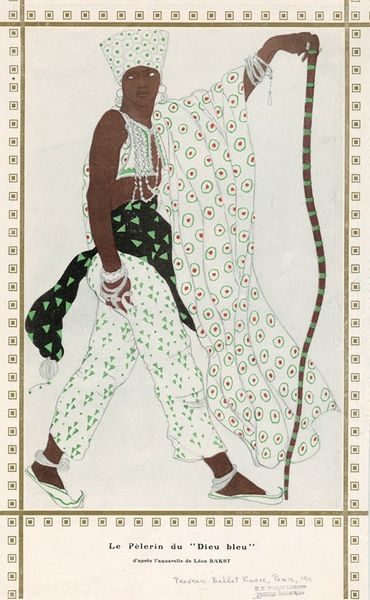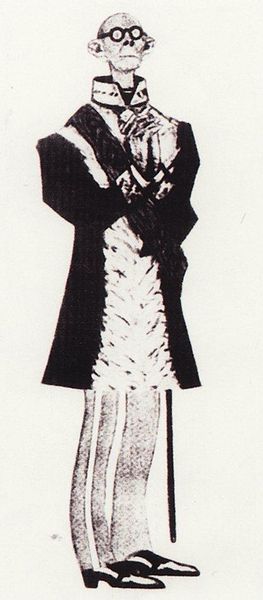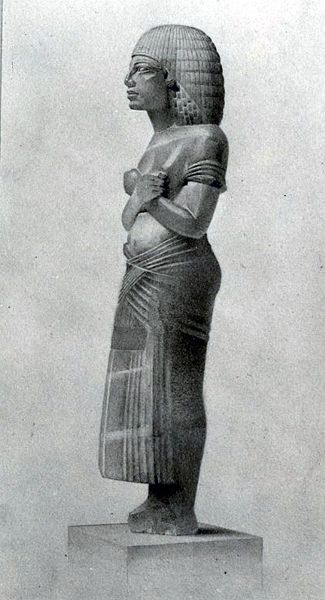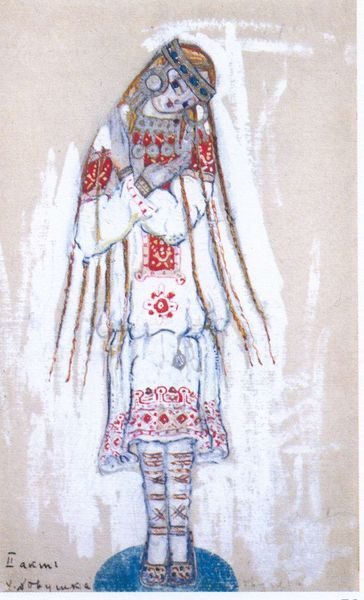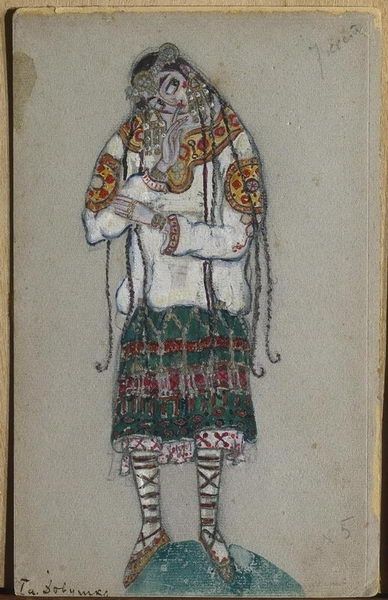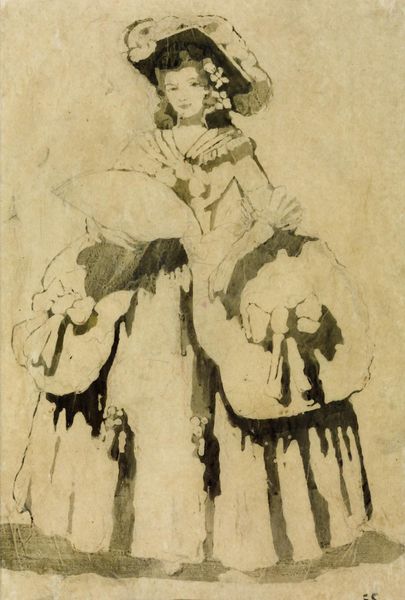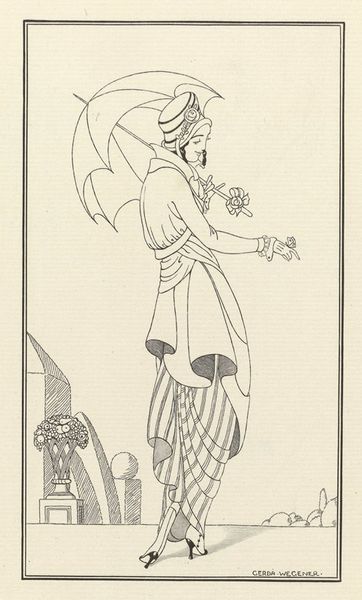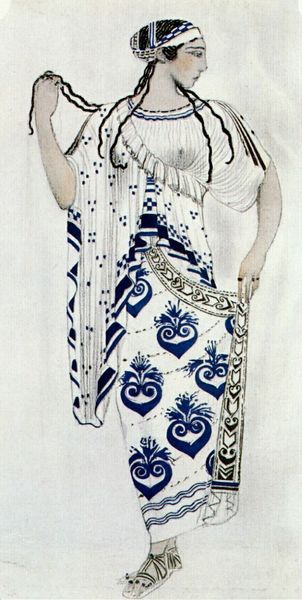
drawing, pencil
#
portrait
#
pencil drawn
#
drawing
#
pencil sketch
#
charcoal drawing
#
pencil drawing
#
pencil
#
costume
#
symbolism
#
portrait drawing
Copyright: Public domain
Curator: Looking at this rather austere image, it's hard not to get caught in its historical resonance. This pencil drawing, called "Captive," was completed by Nicholas Roerich in 1909. What's your initial impression? Editor: Stark. Somber, almost. The muted tones enhance the sense of constraint suggested by the title. Her face holds a remarkable dignity, yet the total composition communicates something mournful. Is she a representation of cultural oppression? Curator: That's precisely the question that drew me. The symbolism embedded in the costume seems rooted in traditional motifs, perhaps alluding to a cultural identity suppressed by external forces. Note the patterning on the dress, how it both adorns and imprisons her. Do you see parallels in Roerich’s other work? Editor: Absolutely. Roerich often worked within theatrical circles designing sets and costumes, and there is something stage-like about this presentation. Captivity isn’t always physical, it can also be staged. She’s literally bearing the weight of tradition, of cultural expectations. Curator: That links directly to how images act as containers of cultural memory, and sometimes trauma. What does the choice of medium—pencil—add to this? Editor: The rawness of the pencil marks, their deliberate sketchiness, feels immediate, vulnerable. Like a fleeting impression, an unvarnished truth being laid bare. Is it her truth or Roerich’s projected anxieties? It’s difficult to untangle. Curator: Anxieties about encroaching modernity and the loss of indigenous cultural identity, perhaps? His Symbolist leanings definitely encouraged such readings. Her jewelry for instance – might each piece embody stories and a hidden narrative? Editor: Without more context, it's hard to specify. Yet it feels like she carries a story larger than herself. This image resonates as more than a portrait, wouldn't you agree? Curator: Entirely. It acts as a powerful cultural emblem of resilience and struggle. This work serves as a constant reminder of the many faces of resilience, both cultural and personal. Editor: For me, Roerich highlights that captivity doesn’t simply involve chains; it exists in cultural burdens.
Comments
No comments
Be the first to comment and join the conversation on the ultimate creative platform.
